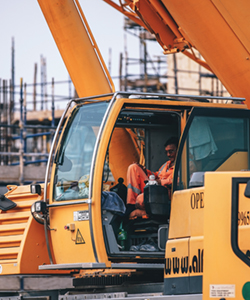
Saving on the Costs to Run Heavy Machinery
Heavy machinery is costly for any company that needs to deploy it. Moving it can require separate trucking and use always carries a cost downstream. Planning ahead for the worst case scenario is a smart idea, but there are small steps you can take every day to ensure equipment lasts well into the future.
More Durable Equipment
One of the best ways to cut costs is by ensuring that the parts most at risk for wear over time remain strong for as long as possible. It’s unreasonable to stop work or to try alternative methods to reduce degradation, but an overlay plate could add extra layers of durability.
Plating your materials, and your machinery, allows it to last far longer under intense conditions. Some plating can withstand extreme heat, while other forms are built for heavy impact or resistance to abrasion. Whatever the primary source of degradation, you can find a way to protect from it and extend the life of parts. Weigh the costs of reinforcing your machinery with better equipment and you may find the difference in yearly repairs is less.
Cutting Maintenance
There are two things you can do in your day-to-day operations that will help reduce the need for frequent maintenance. The first is to adopt checklists of everything you do. These checklists tie into the next point about training operators, but their function is primarily to observe everything is in running order and to try and catch problems before they become serious and lead to downtime.
The second way to cut maintenance is to perform daily inspections. Put those checklists to work with daily inspections, and make sure you’re testing for the problems that may crop up when machinery is dormant. If you maintain good contact with your dealer, or with your maintenance person, a thorough visual inspection can uncover wear in places your workers aren’t coming into contact with on a regular basis.
Train Your Operators Well
When operators follow best practices, they reduce the odds of accidental damage from misuse. If your machinery is equipped with the right monitoring equipment, you can pinpoint specific issues where additional training is needed.
This equips employees with important skills they will use for the future, and it ensures your equipment isn’t used beyond its functional lifespan. However, training is an investment in both time and money. Don’t waste it; audit your training programs to be sure you’re providing up-to-date information employees can use on a practical level.
Form a Downtime Plan
Have a plan for downtime, which is inevitable. This is your time to run errands, follow up with clients or contacts you haven’t spoken to in a while, or concentrate on training. Improving the business in ways outside of actual work holds a great deal of value.
Think about ways you might grow your business, or keep a running list of the small tasks you can’t get to. When downtime occurs, start ticking items off of that list.
Final Considerations
Budgeting for repair is a good idea, but make sure you set aside some cash for rental equipment and other unforeseen consequences. It helps to buy quality parts that carry guarantees on usage as well. Quality parts almost always make up for the cost in their long-term use.
It’s also helpful to look at your options for leasing or renting equipment as well, especially if you’re expanding. The demand for business isn’t always predictable, but keeping a budget for leasing helps protect you from that risk.